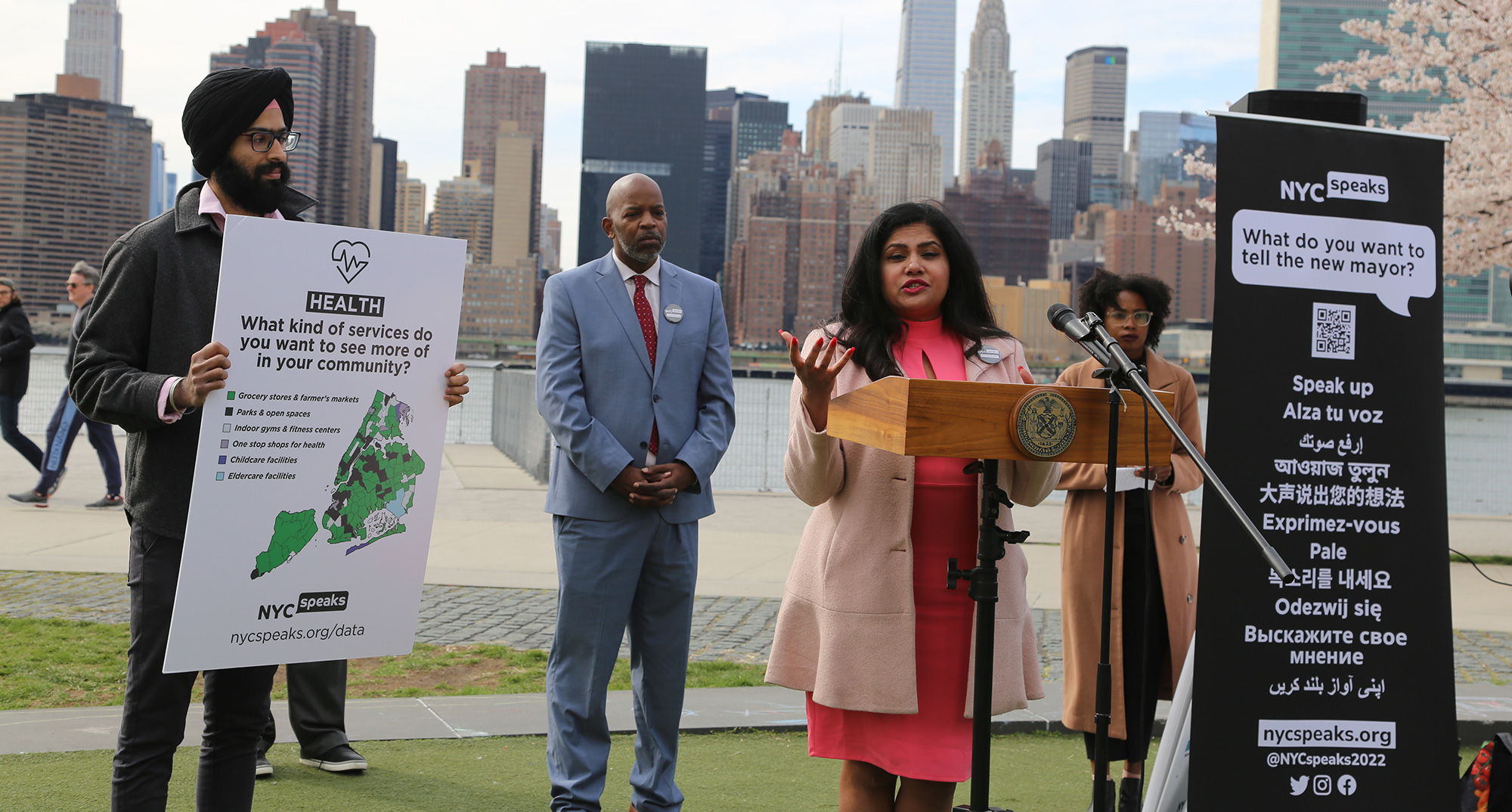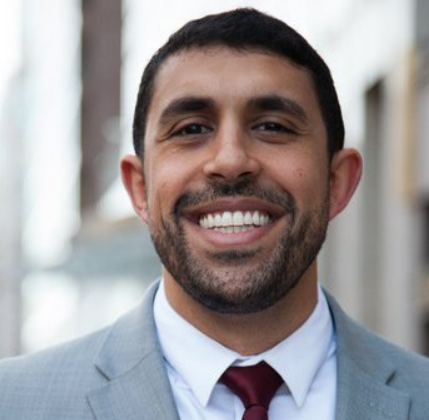
North Star #3
Neighborhood Hubs
Historically disinvested neighborhoods will be prioritized for capital investments in community & recreation spaces that support social, economic, and climate resilience.
What We Heard: Our neighborhoods need more recreation spaces that serve all ages and cultures
- Supporting community wellbeing: Residents expressed that having access to public recreational spaces would foster a stronger sense of community in both youth and adults, create more respect for their environment, improve public safety, and ultimately boost the mental health of vulnerable and disenfranchised communities (recreation spaces were prioritized at nearly 60 events).
- Providing community programming: When asked what new or improved public infrastructure investments New Yorkers would most like to see in their neighborhood, adult responses prioritized high-quality neighborhood recreational centers that provide free/affordable spaces for enrichment programs as their #1 priority in the NYC Speaks Survey. Recreational spaces with enrichment programming were particularly important to youth, justice-involved youth, and parents advocating for youth. NYPL staff also emphasized the need to extend community programming in libraries by providing library staff with the additional resources that they need to facilitate community programming.
- Upgrading existing recreational spaces: NYCHA residents marked high-quality recreational spaces as their #1 priority for improved public infrastructure investments. Community Conversations with more than 250 NYCHA residents across the 5 boroughs emphasized the need for upgraded community spaces and recreational facilities in their neighborhoods that are currently in deteriorating conditions. City staff also mentioned that there is a lack of access to recreational centers where youth can have safe spaces to play, practice wellness, socialize, and learn life skills.
How the City is Already Taking Action
The City has begun to invest in quality community and recreation spaces throughout New York City. The mayor’s Blueprint for NYC’s Economic Recovery established the NYC SEED (Strategy for Equity and Economic Development) Fund that will invest City dollars in neighborhood-based capital improvement projects using a new equitable investment framework designed to address historic disinvestment. In addition, the Connected Communities Guidebook developed by NYCHA and the Department of City Planning elevates NYCHA sites for infill development, improved access to public transportation, and enhanced local amenities and services, and identifies opportunities for addressing community programmatic needs. The Department of Design and Construction (DDC) is also advancing the construction or renovation of 10 community centers, which will be designed to the NYC Parks and Recreation Center Design standards.
What are Neighborhood Resilience Hubs?
Neighborhood Resilience Hubs serve to reimagine the concept of “community resiliency” by building social, economic, and climate resilience all in one space. Neighborhood Resilience Hubs are community gathering spaces within historically disinvested neighborhoods in NYC designed to build community strength and adaptability to economic and climate stressors. With capital investments, standard community spaces (such as recreation centers and libraries) can be transformed to support residents during climate emergencies by serving as a space to facilitate coordination between community members and distribute resources during these crisis moments. Because neighborhood resilience hubs are public institutions available for community use year-round, these spaces serve the dual purpose of building economic and social resilience before and after periods of crises, by serving as an accessible space to socialize, host vital community programming, and build social equity in historically marginalized neighborhoods. In addition to climate resilient infrastructure to reduce carbon pollution, neighborhood resilience hubs can include: gathering spaces for community members to host block parties, access to green space and parks, multilingual social services, resource distribution centers, public recreation facilities, and access to computers and technology.
Initial Commitments
- The Chief Engagement Officer, a newly created position within City Hall, will work together with capital agencies to create a unified community engagement strategy to engage New Yorkers in envisioning the future of neighborhood community spaces. A unified engagement strategy will support resident understanding of government processes and build cohesion among planning exercises led by different city agencies.
- The City will conduct a landscape scan of existing City-owned community centers to identify capital repair and programming needs and service gaps. The landscape scan will analyze centers’ locations, hours of operation, programming type, state of repair, among other characteristics to identify gaps. The plan will be informed by a shared vision for and definition of ‘community resilience hubs’ that simultaneously advances social, economic, and climate resilience and promotes community control over community assets.
- The Mayor’s Office of Climate and Environmental Justice (MOCEJ) will identify and prioritize city-owned community facilities for the Climate Strong Communities program. To identify and prioritize projects, NYC will leverage the findings from Commitment 3B and existing data and analysis on neighborhood vulnerability, climate resilience needs, and community priorities. MOCEJ will also work to leverage new and existing federal funding opportunities–such as the funding from the Infrastructure Investment and Jobs Act (IIJA) and FEMA’s Building Resilient Infrastructure and Communities (BRIC)–to implement prioritized capital projects.
- The NYC Housing Authority (NYCHA) and the Department of Housing Preservation and Development (HPD) will define opportunities for improvements of community spaces at public housing and low-income senior housing developments that can serve as community resilience hubs to provide safe refuge to residents and communities during emergencies and assist in response, recovery, and mitigation. NYCHA’s work on resilience hubs is supported by a recently awarded scoping grant through FEMA’s Building Resilient Infrastructure and Communities (BRIC) program, and will result in a plan for a network of resilience hubs throughout NYCHA developments. In addition, the study will produce a benefit-cost methodology aimed at demonstrating how resilience hubs can support public housing and low-income residents through the challenges of a changing climate and furthering the city’s ability to secure federal resiliency funding for such efforts. HPD will pilot two Community Resiliency Hubs in HPD Senior Housing projects in flood-prone, low income areas. The pilots will be funded using CBDG-DR grant funds, and will enable HPD to test ideas while providing resiliency benefits to vulnerable residents and their communities.
Metrics
- Total City dollars invested in capital projects that support community centers and programming
- Number of residents engaged as part of visioning sessions to define the future of neighborhood community spaces
- Number of residents living within a quarter-mile of a designated resilience hub

“The dialogue and interagency communication that sparked from NYC Speaks is something I hope to continue to see. The action plan workshop stood out to me, as it was a gathering of professionals across city agencies and community based organizations specifically brought together to discuss how we can complement each other. It was a very powerful group of influential people and substantive conversation. We were presented with problems and relied on one another to solve them.”